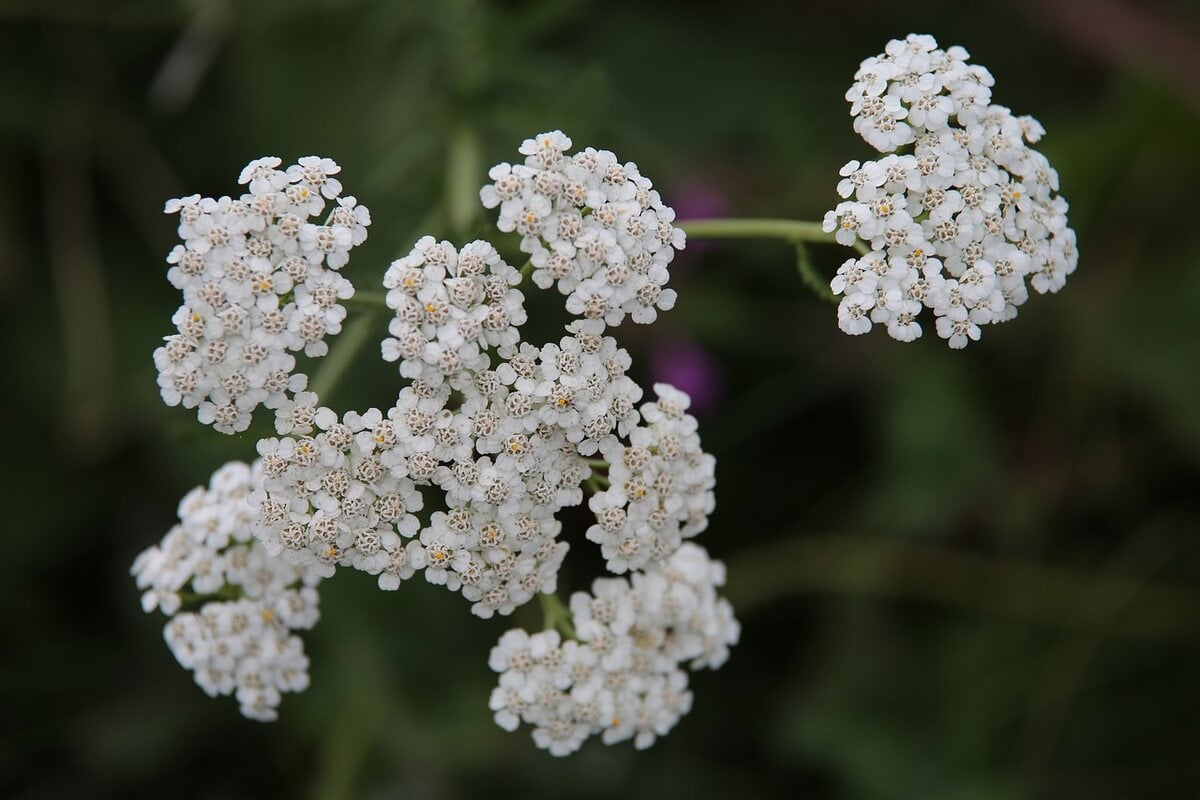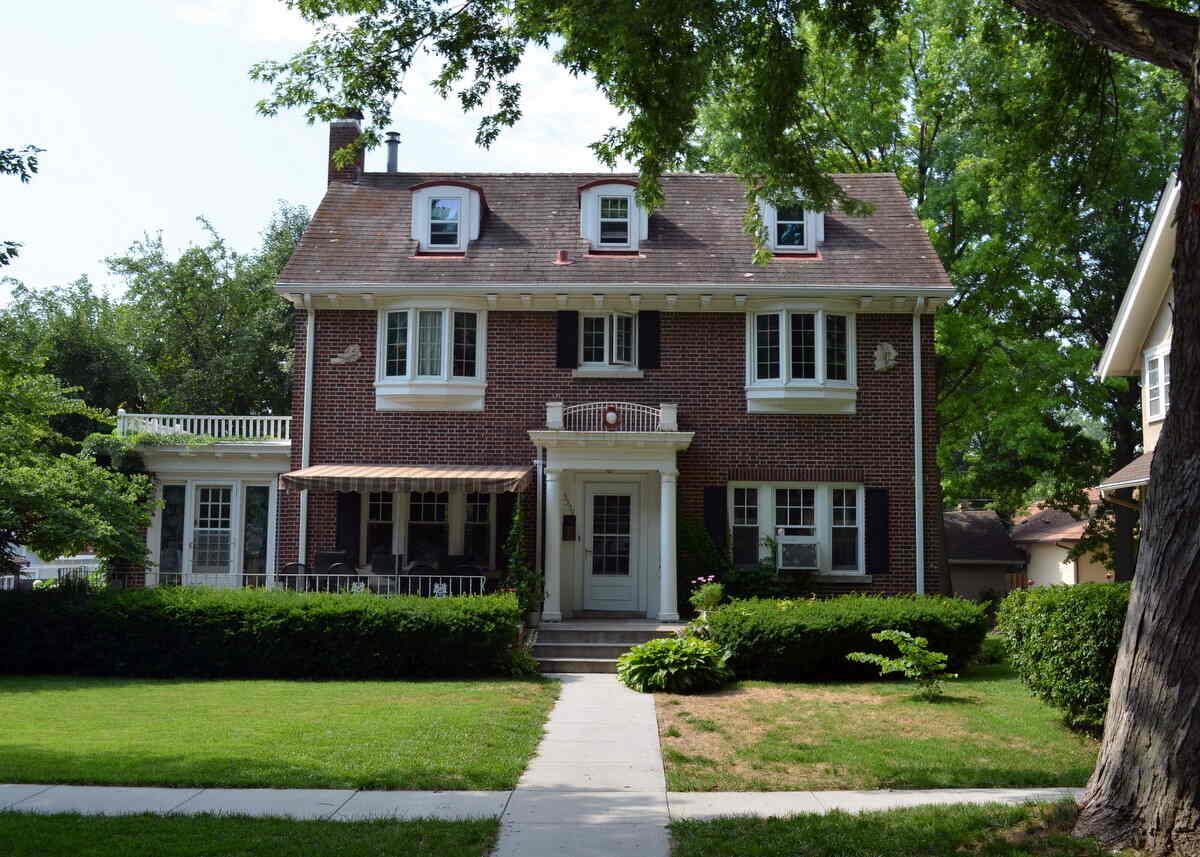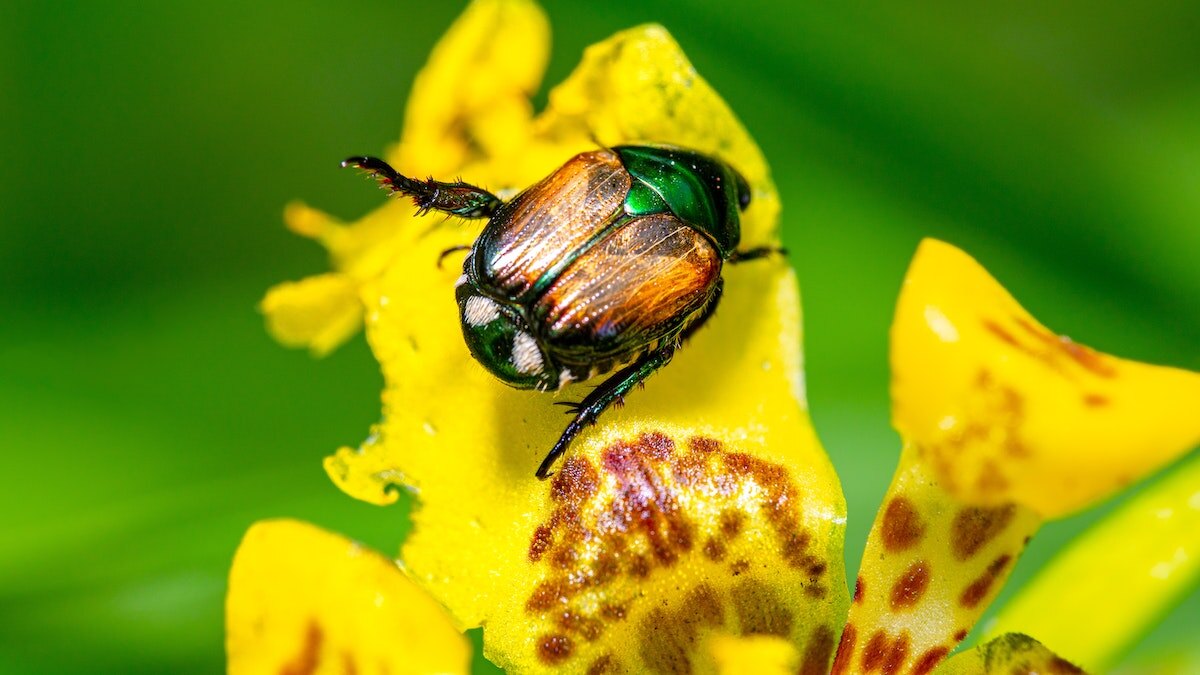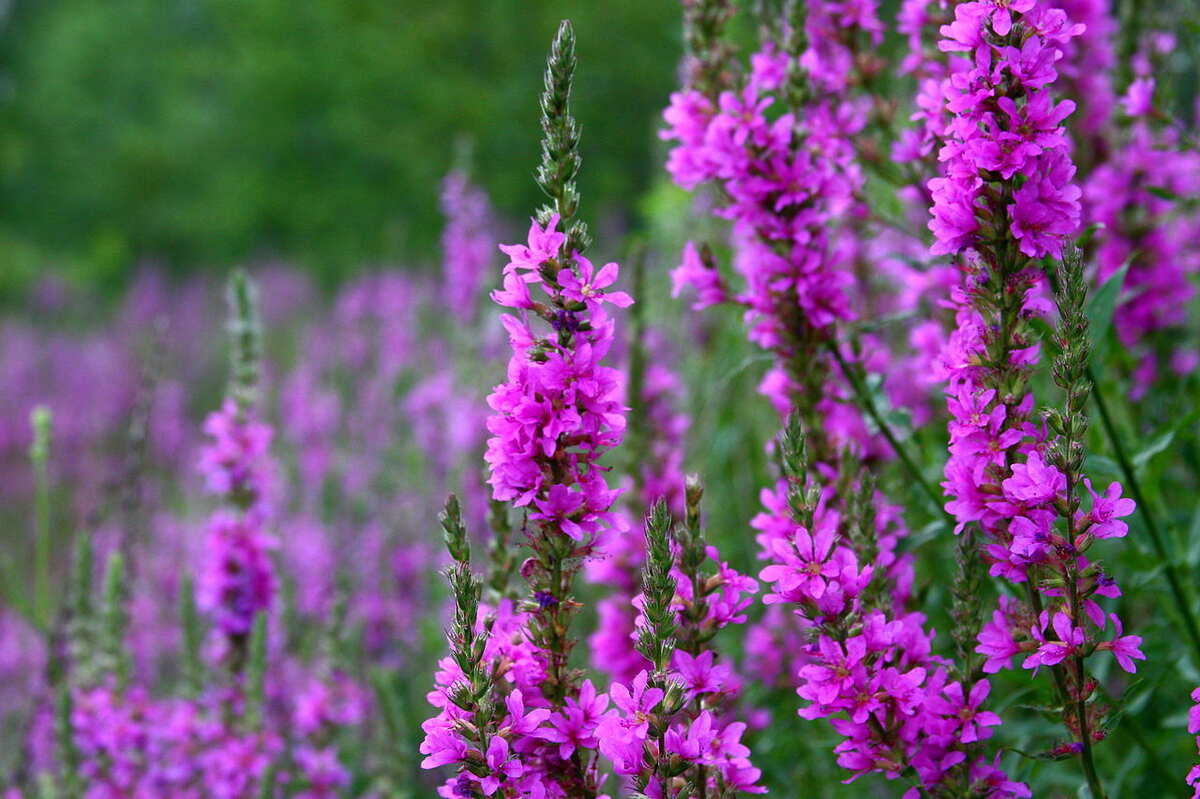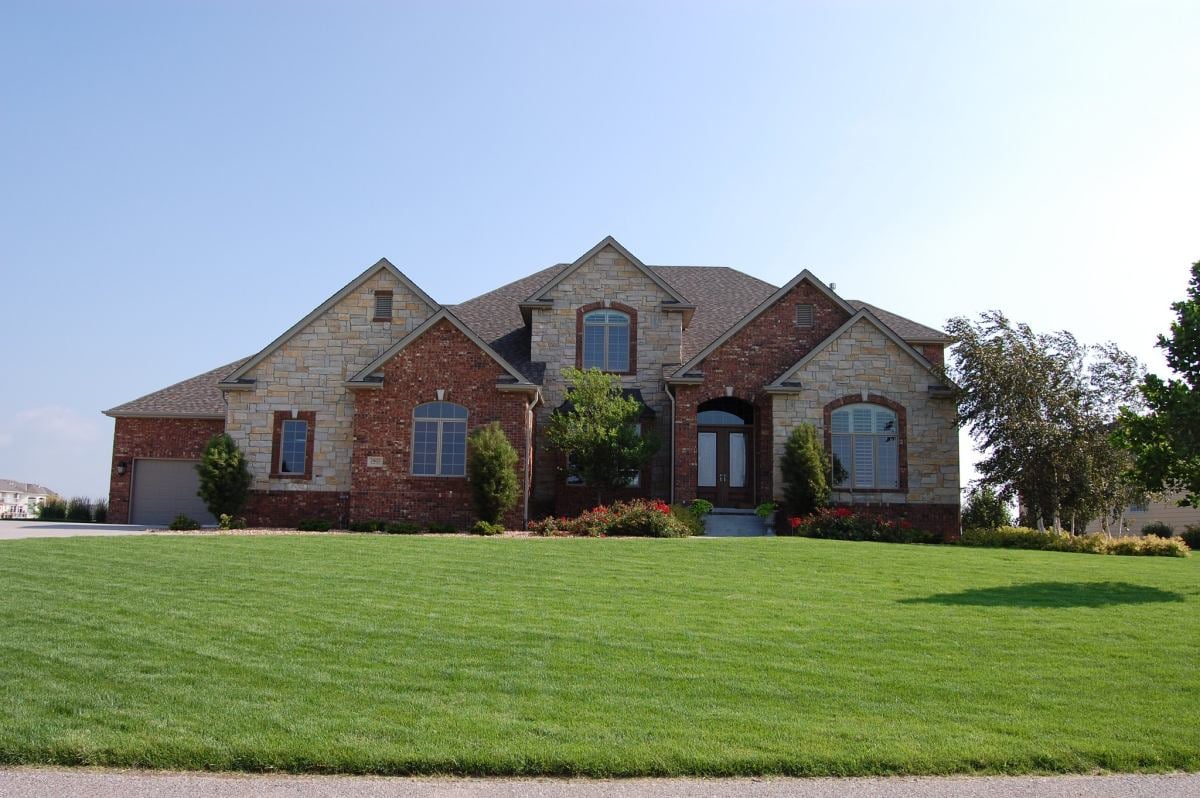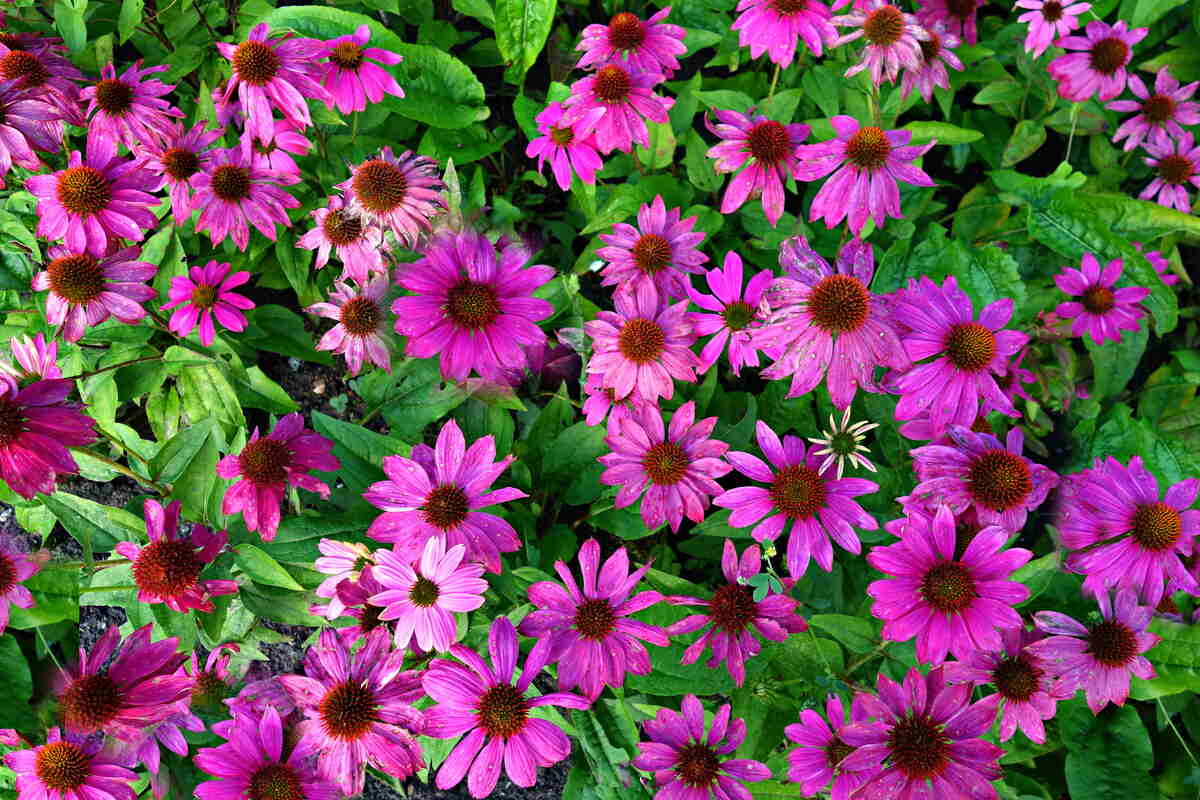
Are you looking to add more plants to your landscape, but are dreading the extra work that comes with them? Consider adding native plants. Omaha native plants are often low-maintenance and hardy, well-suited for the Great Plains. There are many for you to choose from, from beautiful blooms to stylish shrubs. Here are a few of the best native plants for Omaha landscapes:
1. Aromatic Aster (Symphyotrichum oblongifolium)
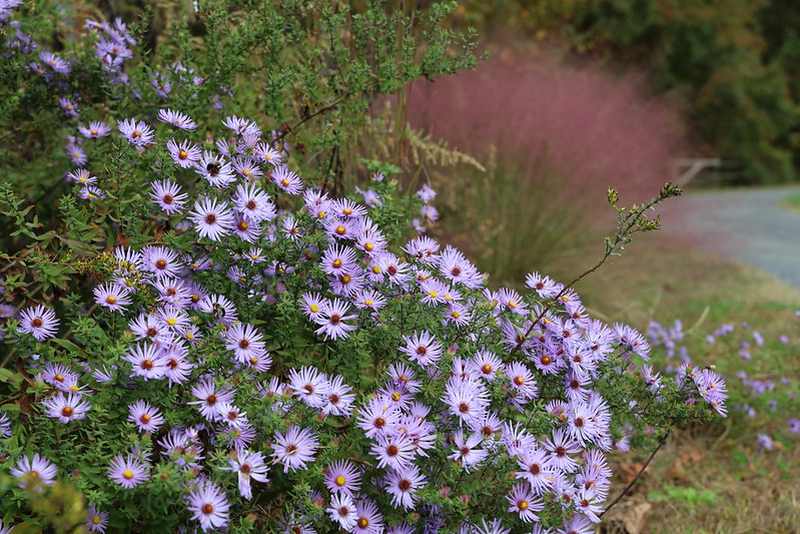
Unlike most blooms, asters (Aster spp. and Symphyotrichum spp.) skip the spring and summer blooming seasons; instead, they grace your garden with fantastic fall flowers. While there are many species of asters that will do well in your Omaha yard, the aromatic aster is one of the more famous ones.
Also known as the wild blue aster, aromatic aster is a fragrant flower that ranges in color from sky blue to blue-violet to purple. Its flowers attract butterflies, bees, and other pollinators in the fall, while its seeds feed birds in the cold winter months. These hardy native wildflowers are cold, heat, salt, and drought-tolerant; they’ll also grow in poor soils. They thrive in full sun.
- Plant Type: Flower
- Hardiness Zones: 3 – 8
- Sun: Full sun to partial shade
- Water Needs: Low
- Soil: Well-drained soils
- Duration: Perennial
- Mature Height: 1 to 3 ft
- Blooming Period: September to October
There is an aster for every landscape. You might be able to find one that’s not purple, too, as they can come in blue, pink, purplish-red, and white. If you’re looking for native asters to place in shaded spaces, give the heart-leaved aster (Aster cordifolius) and big-leaved aster (Aster macrophyllus) a shot. These purple and white flowers don’t mind shade and tolerate all types of soil.
2. Milkweed (Asclepias spp.)
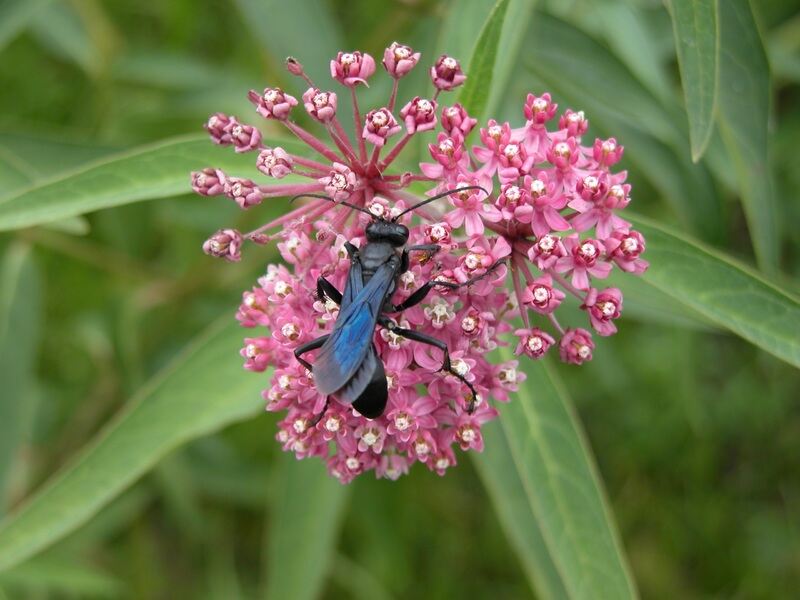
Nebraska is home to many native species of milkweed. While they’re typically not a welcome sight in the landscape, it’s about time we embrace them.
Milkweed plants get a bad rap for being so prolific and being a touch toxic, but they have beautiful blooms, and – more importantly – they’re important to the endangered Monarch butterfly. The Monarch butterfly – as well as the similarly-colored Queen and Viceroy butterflies – use milkweed as a host plant, laying their eggs on them.
Omahan homeowners have quite a selection of milkweed species to choose from, ranging in color from warm pinks and oranges to interesting greens. Here are three milkweed species that you might want to consider adding to your landscape:
- Common milkweed (Asclepias syriaca): Blooming from June to August, this milkweed has light-pink and rose-colored clusters of flowers. It’s a little tall, ranging from 3 to 8 feet in height.
- Swamp milkweed (Asclepias incarnata): This pink-blossomed milkweed seems to be more attractive to Monarch butterflies than the common milkweed. This species doesn’t spread too aggressively. It’s perfect for yards with moister soils.
- Butterfly milkweed (Asclepias tuberosa): This is more accepted as a landscape plant, especially since it’s not as aggressive of a spreader as other milkweed species. Resisting deer, it has orange, red, and yellow blooms.
While you can grow milkweeds from seed, sometimes you don’t even need to. Milkweed sometimes finds itself in Omaha landscapes without homeowners even trying. Consider leaving it alone if it’s in a low-maintenance area of your garden. Then, you can enjoy your newfound visitors – bees, butterflies, and hummingbirds – with little to no work!
Here is some information about the butterfly milkweed:
- Plant Type: Flower
- Hardiness Zones: 3 – 9
- Sun: Full sun
- Water Needs: Low; Drought-resistant
- Soil: Can tolerate many types of soil
- Duration: Perennial
- Mature Height: 1 to 2 ft
- Blooming Period: Summer
3. Pale Purple Coneflower (Echinacea pallida)

The pale purple coneflower offers a more unique shape than other coneflowers. This pale pink bloom has long, droopy petals and a pleasant smell. It attracts butterflies and hummingbirds with its flowers, while birds eat its seeds in the fall. The pale purple coneflower is also great in a floral arrangement.
This plant is low-maintenance and hardy, resisting heat, drought, moisture, and even deer. If you allow it, it will re-seed itself every year. Remove the cones left behind if you don’t want it to spread.
- Plant Type: Flower
- Hardiness Zones: 3 – 9
- Sun: Full sun
- Water Needs: Low to average, but very drought-tolerant
- Soil: Can tolerate drier soils, but prefers average to well-drained soils
- Duration: Perennial
- Mature Height: 2 to 3 ft
- Blooming Period: Spring to summer
If you want a smaller coneflower, consider the narrow-leaf coneflower (Echinacea angustifolia). Also called the black-Samson coneflower, it’s very similar to the pale purple coneflower in terms of care requirements, but it only grows up to 2 feet tall.
4. Goldenrod (Solidago spp.)
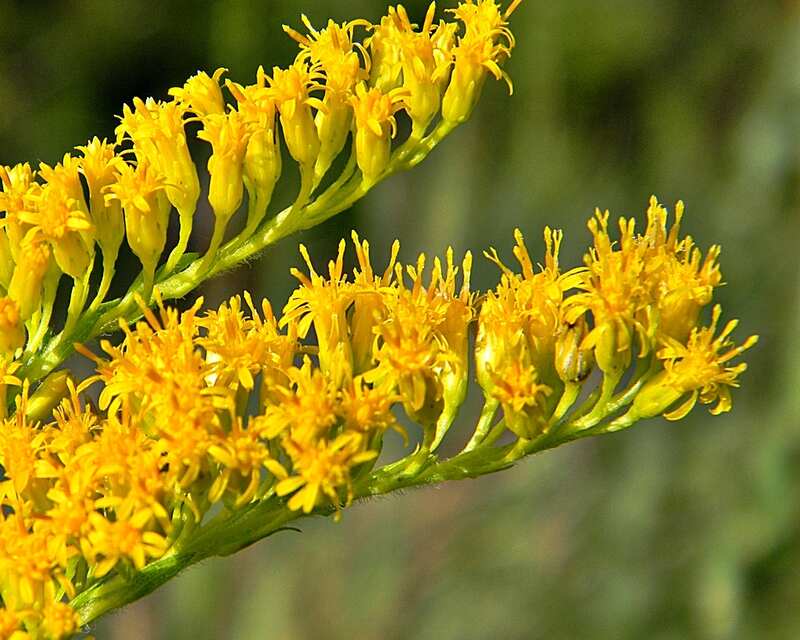
This dazzling yellow bloom is Nebraska’s official state flower; specifically, it’s the giant goldenrod (Solidago gigantea). While the giant goldenrod is certainly one of the most striking of the goldenrods due to its size – up to 6 ft tall! – you might want something more compact for your eastern Omaha landscape:
- Autumn goldenrod ‘Golden Fleece’ (Solidago sphacelata ‘Golden Fleece’): This goldenrod is much shorter, growing only up to 18 inches tall.
- Showy goldenrod (Solidago speciosa): It grows nearly as tall as giant goldenrod, but it’s typically shorter. Showy goldenrod blooms later in the year – from August to October – and has beautiful red stems.
- Stiff goldenrod ‘Fireworks’ (Solidago rigida ‘Fireworks’): This goldenrod species is 5 feet tall and blooms from August to November. This late bloomer is great for fall colors.
Goldenrod’s gold and yellow flowers cluster together and attract butterflies, bees, wasps, beneficial spiders, and other insects. As a bonus, goldenrod also holds up well as a cut flower. If you’re worried about the pollen flaring up your allergies, don’t. This wildflower gets blamed for allergies, but its pollen is too heavy to be carried by the wind. It just happens to bloom at the same time as ragweed, which does have light pollen that can trigger allergies.
Goldenrod is as beautiful as it is hardy. Thriving despite poor conditions, it was chosen as the state flower because it’s a good representation of Nebraskan pioneers’ perseverance.
Here is some information about the stiff goldenrod:
- Plant Type: Flower
- Hardiness Zones: 3 – 9
- Sun: Full sun to partial shade
- Water Needs: Moderate but drought-tolerant
- Soil: Will tolerate many types of soil, but prefers well-drained soils
- Duration: Perennial
- Mature Height: 3 to 4 ft
- Blooming Period: August to November
5. Blazing Star (Liatris spp.)
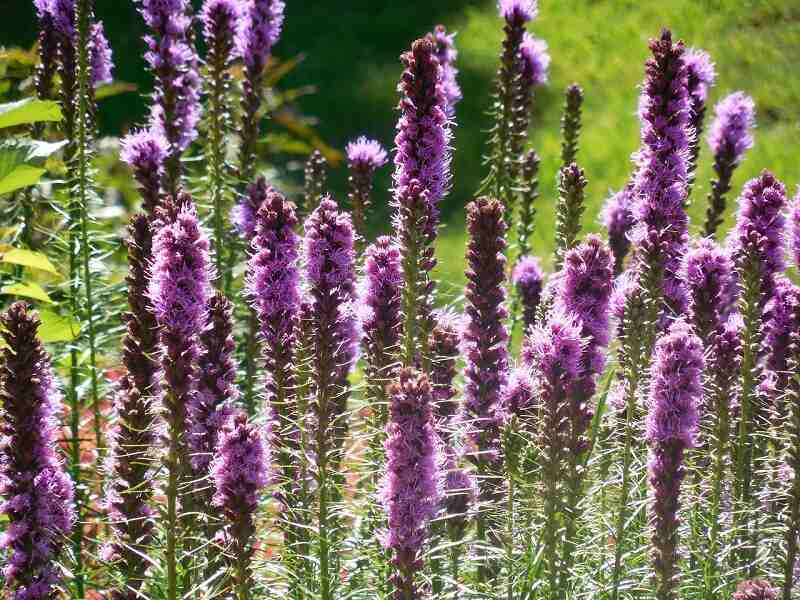
Also known as gayfeather and liatris, blazing stars have large flower spikes that attract bees, butterflies, and hummingbirds to your Omaha garden in the spring. In the winter, visiting birds will eat their seeds.
Blooming from late summer to early fall, blazing stars typically have purple flowers, but sometimes they bloom white or red. Their flowers have protruding stamens, which give them a fuzzy appearance. The large flower spikes are clusters of flowers that often bloom from top to bottom. Its size, along with its dramatic spikes, helps the blazing star become a focal point for your landscape. They’re also excellent cut flowers.
There are many species to choose from, but these two are recommended for Omaha homes:
- Prairie blazing star (Liatris pycnostachya): It’s also called the Kansas gayfeather and thickspike gayfeather. The ‘Eureka’ variety has large, long-lasting purple flower spikes.
- Dotted blazing star (Liatris punctata): Also known as the dotted gayfeather, it only grows up to 12 to 18 inches tall.
Blazing stars are hardy plants; they’re heat, cold, and drought-resistant. Here is some information about the prairie blazing star:
- Plant Type: Flower
- Hardiness Zones: 3 – 9
- Sun: Full sun
- Water Needs: Low to moderate; Drought-tolerant
- Soil: Prefers moist, well-drained soils
- Duration: Perennial
- Mature Height: 2 to 5 ft
- Blooming Period: July to August
6. Big Bluestem (Andropogon gerardii)
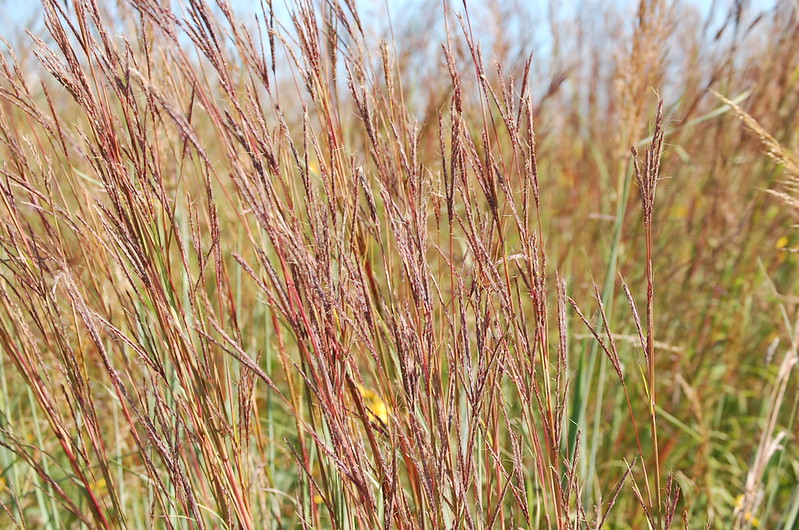
The big bluestem isn’t a flower, but it can greatly enhance your landscape. This warm-season native is an ornamental grass, growing tall in clumps. Its tall seedhead and its size give your yard some visual interest in the fall and winter when the flowers have typically stopped blooming. Big bluestem draws birds and butterflies into your garden and is used as a habitat by wildlife; however, it resists deer.
It’s a low-maintenance plant that resists drought. However, you may need to prune it in the winter if it starts toppling over because of the snow.
There are many varieties of big bluestem to choose from depending on what you want for your garden. The ‘Pawnee’ variety is shorter and turns red in the fall. ‘Silver sunrise’ is shorter, grows more compactly, and has blue-tinged leaves and more flowers than other varieties.
- Plant Type: Ornamental grass
- Hardiness Zones: 4 – 9
- Sun: Best in full sun, but will grow in partial shade
- Water Needs: Low to average, but drought-resistant
- Soil: Can tolerate many soil types, but prefers well-drained soils
- Duration: Perennial
- Mature Height: Up to 8 ft tall, grows in bunches that are about 36 inches across. Some varieties reach only up to 6 ft tall.
- Blooming Period: Blooms in July, but its seeds last through the winter months
If you want a smaller but similar ornamental grass species, consider the little bluestem (Schizachyrium scoparium) and its reddish-tan foliage. It only grows up to 4 feet tall and is a little more low-maintenance because it’s smaller. It tolerates heat, drought, and humidity.
7. Leadplant (Amorpha canescens)
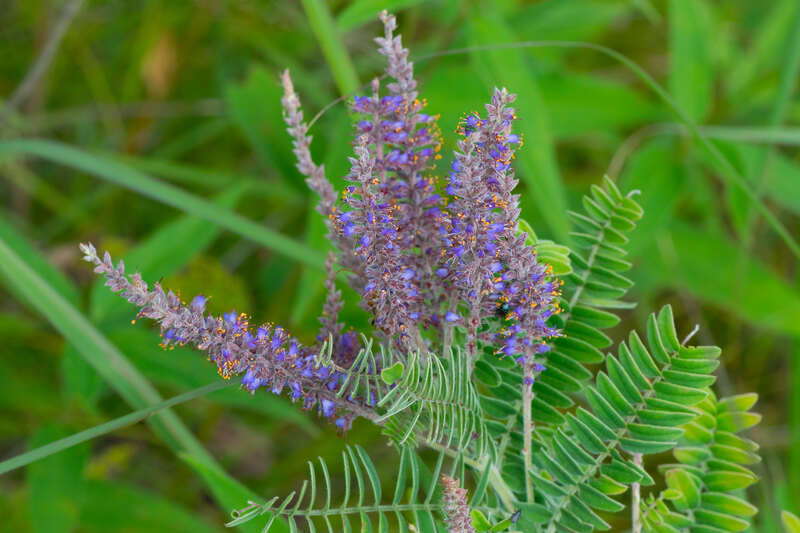
The leadplant is a shrub with feathery silver-gray leaves and spikes of small, violet-blue flowers. The blooms have protruding anthers that give the plant a pop of gold and yellow. These fragrant flowers attract many beneficial insects, including bees, butterflies, and moths. When dried, its foliage makes a pleasant tea.
It’s a hardy plant with a deep root system, resisting heat, drought, wind, and even fire. Don’t be alarmed if you see it die in the winter; it’ll regrow in the spring. It blooms from late spring to early summer.
- Plant Type: Shrub
- Hardiness Zones: 3 – 9B
- Sun: Full sun to partial shade
- Water Needs: Moderate, but very drought-tolerant
- Soil: Prefers well-drained sandy or loamy soils, but can tolerate poor soils
- Duration: Perennial
- Mature Height: 4 ft
- Blooming Period: June to July
8. Foxglove Beardtongue (Penstemon digitalis)
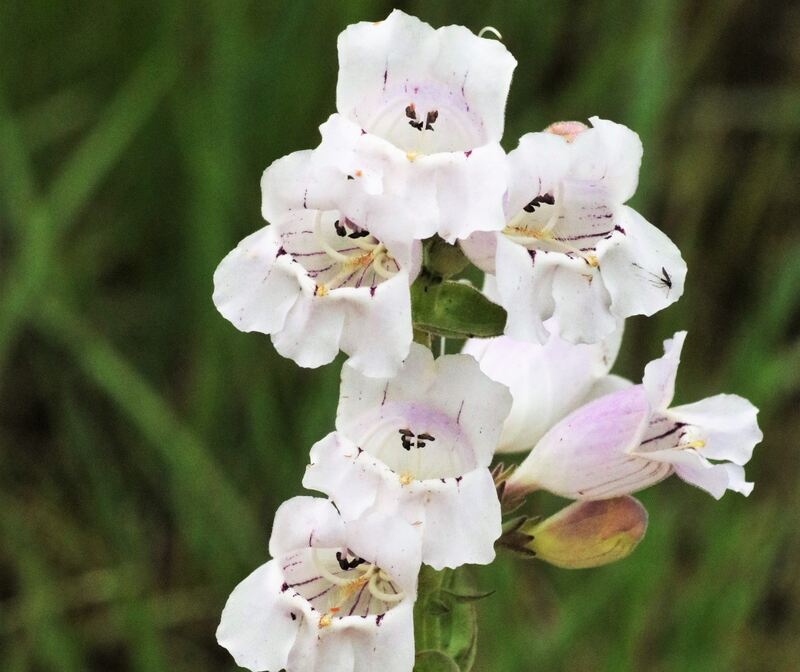
The foxglove beardtongue is another low-maintenance beauty that can serve as an accent plant for your Omaha landscape. It has clusters of white, slightly pink-tinged, bell-shaped flowers that attract hummingbirds, butterflies, and other beneficial insects to your garden. For even more color, you can get the ‘Husker Red’ variety, which has red stems. They’re great in a flower arrangement, too.
Yet another hardy prairie native, it tolerates drought, deer, and rabbits. It tolerates all types of soil as long as they’re well-draining.
- Plant Type: Flower
- Hardiness Zones: 3 – 8
- Sun: Full sun
- Water Needs: Low to moderate
- Soil: Tolerates any type of well-drained soil
- Duration: Perennial
- Mature Height: 3 to 5 ft
- Blooming Period: Late spring to midsummer
If you’re looking for a slightly smaller beardtongue, then check out (ironically) the large beardtongue. Also known as the shell-leafed penstemon, it has large, lavender, tubular flowers that attract bees and hummingbirds. It’s one of the showiest beardtongues and has similar care requirements to the foxglove beardtongue.
FAQs About the Best Native Plants for Omaha
Omaha is in the USDA Hardiness Zone 5b. Look for plants that thrive in this hardiness zone to have the best results.
There are many trees that do well in Nebraska, including maples, hickory trees, oaks, pines, and birches. Just steer clear of ash trees; the Nebraska Statewide Arboretum doesn’t recommend planting them due to emerald ash borer, an invasive beetle that feeds on ash trees.
Tall fescue, Kentucky bluegrass, and buffalograss are the best picks for Omaha lawns. Read our article on the best grasses for Omaha to learn more.
Here are a few other wildflowers that can thrive in your Omaha yard:
– Yarrow (Achillea millefolium)
– Plains coreopsis (Coreopsis tinctoria)
– Black-eyed Susan (Rudbeckia hirta)
– Purple poppy mallow (Callirhoe involucrata)
– Phlox (Phlox species)
Add Some Prairie Natives to Your Omaha Yard
Native plants beautify your yard without much effort; in fact, some of them will thrive on neglect. The Midwest offers some unique, standout flowers, shrubs, and ornamental grasses that will surely raise your curb appeal. You’ll also get some friendly wildlife visitors as a bonus.
If you need a hand adding these prairie plants to your yard, why not hire a local landscaping company? Connect with an Omaha landscaping pro on LawnStarter today.
Main Image Credit: Hippopx
